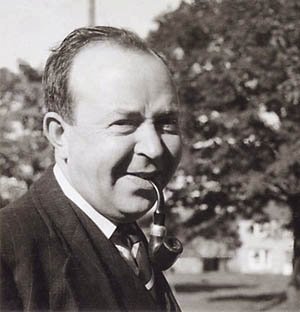This
short anecdote was taken down by Calum Maclean from John MacDonald of
Highbridge on the 29th of May 1951:
Tha
àite shìos anns an Apainn ris an abrar iad Leac an Tuim. Is tha clàch am bràigh
an rathaid ann is tha i na iongnadh aig mòran a tha a’ tighinn an rathad. Agus
’s iomadh duine a tha a’ dol a choimhead oirre. Agus tha làrach nan ceithir
corragan agus an òrdag anns a’ chlach. Agus cuiridh sibh a-staigh iad oirleach
anns a’ chloich. Agus tha iad a’ bruidhinn air agus i teth, a’ chlach. Agus tha
iad a’ bruidhinn air shìos an rathad agus aig seann-sluagh gur h-e an Donas a
chuir a chorragan innte. Agus their iad Clach an Aisteir rithe gus an latha
an-diugh.
There
is a place down in Appin which they call Leac an Tuim. And there is a stone on
the upper end of the road and many who come by that way are taken by surprise.
And many a person goes over to view it. The stone is marked by four fingers and
a thumb. And you can put them [fingers and thumb] an inch into the stone. They
speak of the stone being hot. They speak of this down by the way and the old
folk reckon it was the Devil himself who put his fingers into it. They call it
Clach an Aisteir / The Devil’s Stone to this very day.
Possibly a variant spelling of
the rock could be Clach an Àbhaisteir. There are numerous place-names with a
connection to the devil and other supernatural entities throughout the
Highlands and Islands as well as elsewhere. Probably one of the most famous
place-names is Bod an Deamhain usually translated (rather politely) as The
Devil’s Point which is in the Cairngorms. In Scots tradition there are also
examples of ‘The Devil’s Stane’ at Kemnay, Aberdeenshire; one at Invergowrie,
Perth and Kinross; one in Belmuire Wood on the north side of Ythan, also Aberdeenshire.
The latter has been described as a stone with “some curious marks resembling
cloven hoofs, being the impress of the devil’s feet.”
A similar tradition also
informs the naming of stone called Clach Ceann a’ Mheòir which is located in
Easter Ross:
In the parish of Rosskeen there is a large boulder-stone called Clach
ceann nam meur, the “Stone of the Finger Ends,” at the east of the Farm of Dalnacloich,
“the field of the stone.” Connected with this stone is a tradition which shows
it as a horrible memorial of feudal times – that a laird of Achnacloich, when
settling marches, asked a youth, whom he had taken to witness the settlement,
whether he would remember that as the march-stone. On his replying that
he would, the Laird commanded him to lay his hand flat upon the stone, and with
a stroke of his sword cut off the tips of the lad's fingers, saying, “You will
remember it now.” And posterity still remembers it.
References:
J.
M. McPherson, Primitive Beliefs in the
North-East of Scotland (London: Longmans, Green, 1929)
Rev.
William Taylor, ‘Names of Places in Easter Ross’, The Scottish Geographical Magazine, vol. 2 (1886), pp. 1–20
SSS
NB 9, p. 876
Image:
The
Devil’s Stane, Invergowrie, Perth and Kinross


No comments:
Post a Comment